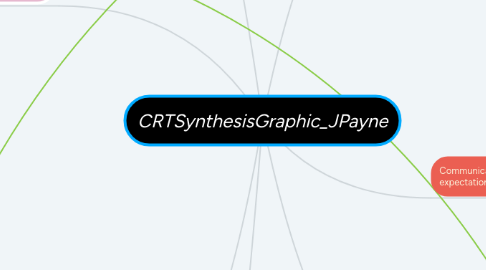
1. Positive perspectives on parents and families
1.1. Outreach Opportunities
1.1.1. Conduct Home Visits
1.1.2. Send out weekly announcements
1.1.3. Parent Interviews
1.1.4. Establish Parent/Teacher Events and Organizations
1.2. Self Cultural Enrichment
1.2.1. invest in cultural background knowledge of students' families
1.2.2. Engage in community center activities
1.2.3. Tour student physical environments,
1.2.3.1. Moll, L. C., Amanti, C., Neff, D., & Gonzalez, N. (1992). Funds of knowledge for teaching: Using a qualitative approach to connect homes and classrooms. Theory Into Practice, 31(2), 132-141.
2. Communication of high expectations
2.1. Communicate clear, specific expectations
2.2. Classroom Culture is open for risk
2.2.1. participation and praise is normed, critical analysis and debate is welcome.
3. Learning within the context of culture
3.1. Using a range of different modalities
3.1.1. I can differentiate with arts integrated strategies
3.1.1.1. improv
3.1.1.2. visual art
3.1.1.3. creative movement
3.1.2. Learner Profiles
3.1.2.1. surveys to inquire how students prefer to learn,
3.1.2.2. VAKTS
3.1.3. Independent Work
3.1.3.1. independent physical space
3.1.4. Varying forms of assessments
3.1.4.1. Edpuzzle,
3.1.4.2. Exit Tickets
3.1.4.3. Essays
3.1.4.4. Quizlet Vocabulary
3.1.4.5. Hands on Activity
3.1.4.6. Benchmarks
3.1.5. Student projects
3.1.5.1. explore student choice of projects
3.1.5.2. projects that "focus on uses or concepts that apply to their own community or cultural group"
3.1.6. Group work that let them focus on their strengths
3.1.6.1. jigsaw activities
3.1.6.1.1. Brisk, M. E., & Harrington, M. M. (2000). Literacy and bilingualism: A handbook for all teachers. Mahwah, NJ: Lawrence Erlbaum Associates.
3.2. open discussions about cultural differences
3.2.1. individual differences
3.2.2. stereotypical threats
3.2.2.1. Davis, B. M. (2012). How to teach students who don’t look like you: Culturally responsive teaching strategies (2nd ed.). Thousand Oaks, CA: Corwin.
4. Student-centered instruction
4.1. Student choice in study topics
4.1.1. personalized learning
4.2. student lead discussion groups
4.3. inquiry based instruction
4.3.1. Socratic seminars
4.3.2. solutions for real world problems
4.4. community of learning
4.4.1. clubs and literature circles
4.4.1.1. Daniels, H. (2002). Literature circles: Voice and choice in book clubs and reading groups. Portland, ME: Stenhouse.
5. Reshaping the curriculum
5.1. non traditional materials
5.1.1. insight from community or family stakeholders
5.1.1.1. topic experts
5.1.1.2. challenge perspectives
5.1.1.2.1. patriots v loyalist in the upcomming Social studies unit.
5.2. universal themes
5.2.1. tie to big goals and essential questions.
5.3. cooperative learning
5.4. student choice
5.4.1. alone
5.4.2. small group
6. Teacher as facilitator
6.1. learn about individual cultures
6.1.1. artifacts
6.1.1.1. show and tell
6.1.1.2. art enriched lessons
6.1.2. cultural expression through writing
6.1.3. cultural self research
6.2. varied modes of instruction
6.2.1. student led discussions
6.2.2. cooperative work
6.2.3. differentiation
6.3. communities as resources
6.3.1. community speakers
6.3.2. community demonstrations
6.3.3. parents as guest teachers

